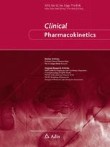
Abstract
Background and Objective
Quetiapine and aripiprazole are currently prescribed for pregnant women to treat schizophrenia and bipolar disorder. A dramlatic decline in the plasma concentrations of these two drugs was observed if the doses remained fixed throughout pregnancy. This study aims to develop physiologically based pharmacokinetic (PBPK) models to predict the pharmacokinetics of quetiapine, aripiprazole, and the active aripiprazole metabolite dehydroaripiprazole during pregnancy.
Methods
We developed models using a combined 'bottom-up' and 'top-down' strategy. Models were verified by assessing goodness-of-fit plots and ratios of predicted-to-observed pharmacokinetic parameters. To extrapolate to pregnancy, we considered anatomical, physiological, and metabolic alterations. The in silico models were applied to predict steady-state pharmacokinetics in the three stages of pregnancy and to inform dose selection.
Results
We successfully constructed PBPK models that accurately predicted the pharmacokinetics of drugs in the adult population. Predictions suggested that the area under the concentration–time curve at steady state in the first, second, and third trimesters, respectively, decreased by 8.7%, 35.0%, and 49.1% for quetiapine and 12.6%, 38.8%, and 60.9% for the active moiety of aripiprazole. The third-trimester plasma concentrations of quetiapine were below the lower limit of the therapeutic range (100 ng/mL) for most of the time interval, and aripiprazole was entirely unable to reach its effective concentration (150 ng/mL).
Conclusions
According to PBPK predictions, the doses should be increased in the latter two trimesters. We generally recommend that women during late pregnancy take at least 2.5- and 2-times their baseline doses of quetiapine and aripiprazole, respectively.



Δεν υπάρχουν σχόλια:
Δημοσίευση σχολίου
Σημείωση: Μόνο ένα μέλος αυτού του ιστολογίου μπορεί να αναρτήσει σχόλιο.